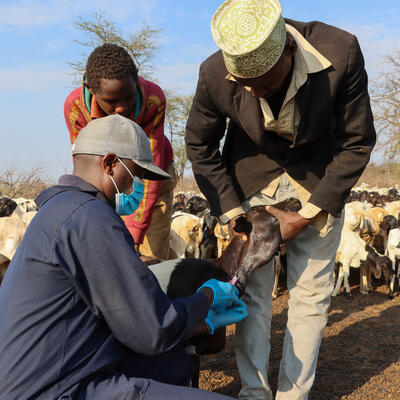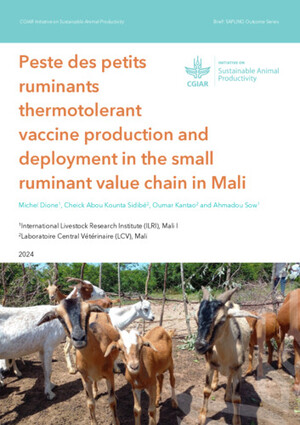

A closer look: Comparing methods to measure methane emissions from sheep
Ruminant livestock produce enteric methane in their multi-chambered stomachs when they digest plant matter. Most methane is released through belching—contrary to a common misconception, only about 5% of livestock methane is produced through flatulence.
Methane is a potent greenhouse gas (GHG) which significantly contributes to climate change.
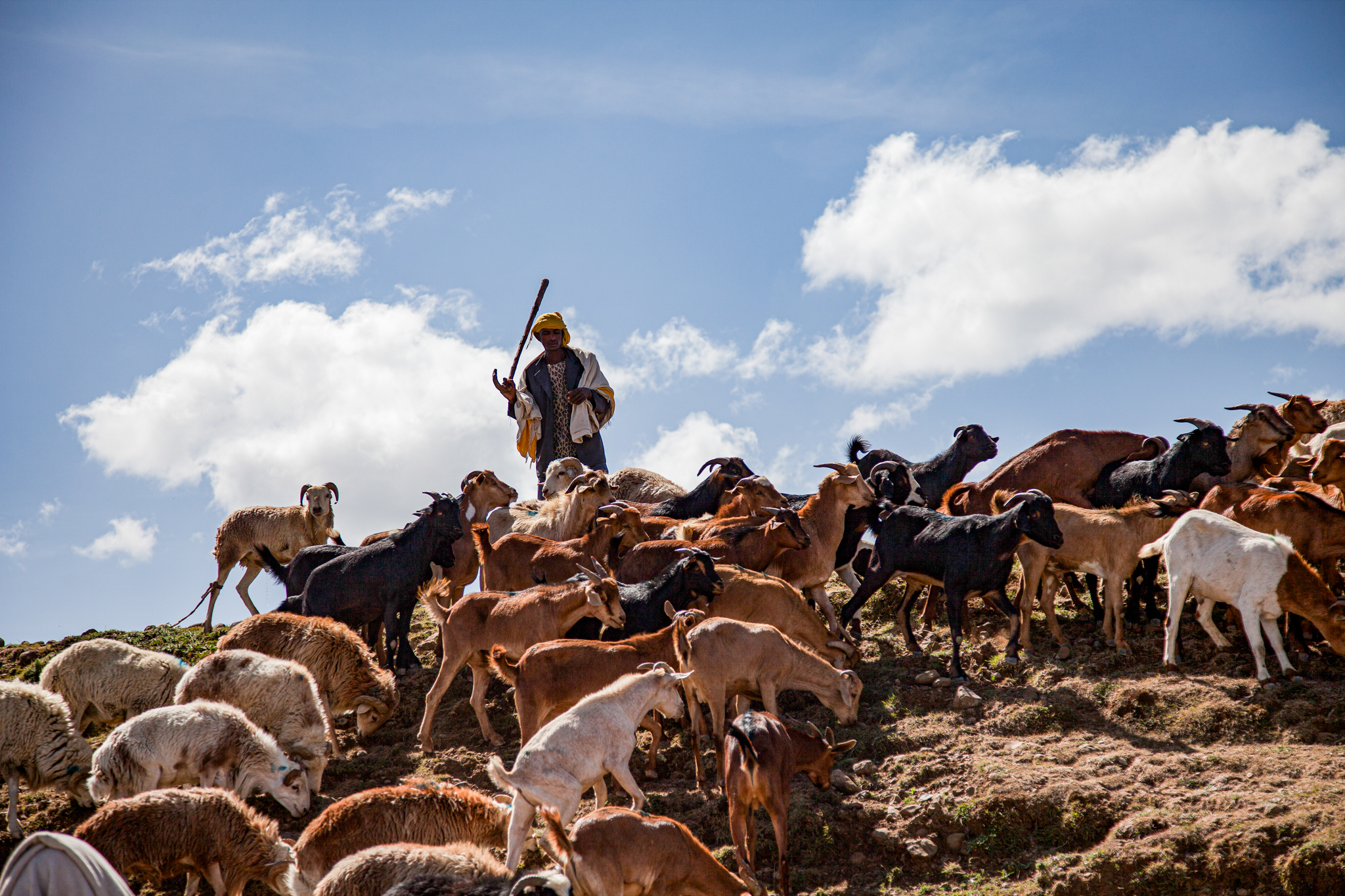
However, a recent survey in Ethiopia conducted by ILRI’s Mazingira Centre has highlighted a significant problem—different GHG measurement models are producing different values, leaving researchers uncertain as to which model is most accurate.
Researchers must understand the discrepancies between the models to make recommendations to policymakers for more accurate national GHG inventory accounting, a key factor in formulating effective mitigation strategies.
Which models?
Governments estimate enteric methane emissions using the Intergovernmental Panel on Climate Change (IPCC) method, the internationally acknowledged standard.
Two types of measurement tiers are commonly used by African countries: Tier 1 and Tier 2. IPCC Tier 1 is the simplest model. It uses animal numbers and multiplies them with yearly emissions estimates per animal (so-called emissions factors).
These general estimates are based on default assumptions for animal characteristics (such as animal size and animal productivity) and composition of their diet across the whole African continent.
IPCC Tier 2 is a more precise approach. In addition to local animal numbers, it considers country-level data on animal characteristics and diet composition. For instance, the average live weight of a sheep in the Ethiopian ILRI-supported survey was 23 kg, which is lower than the IPCC default value of 31 kg. However, in other countries, we might observe the opposite.
Globally, some countries have also adopted Tier 3 measurement methods, which include even more country and animal-specific data.
The survey of ILRI’s Mazingira Centre compared the IPCC Tier 1, IPCC Tier 2 method, and the Commonwealth Scientific and Industrial Research Organisation (CSIRO) Tier 2 method (which estimates intake in a slightly different way).
The process
The researchers surveyed North Shewa, an administrative zone located in the Amhara Regional State of Ethiopia, from February 2020 to January 2021. This was done under the Programme for Climate Smart Livestock Systems.
They surveyed 77 sheep-owning households from the upper and lower highlands based on a random selection of GPS points, collecting data on age, sex, and physiological condition as recommended in the methodologies to estimate emissions.
They used GPS collars to track sheep movements, finding the average distance the animals travelled over the study period was an average of 2.2 km per day.
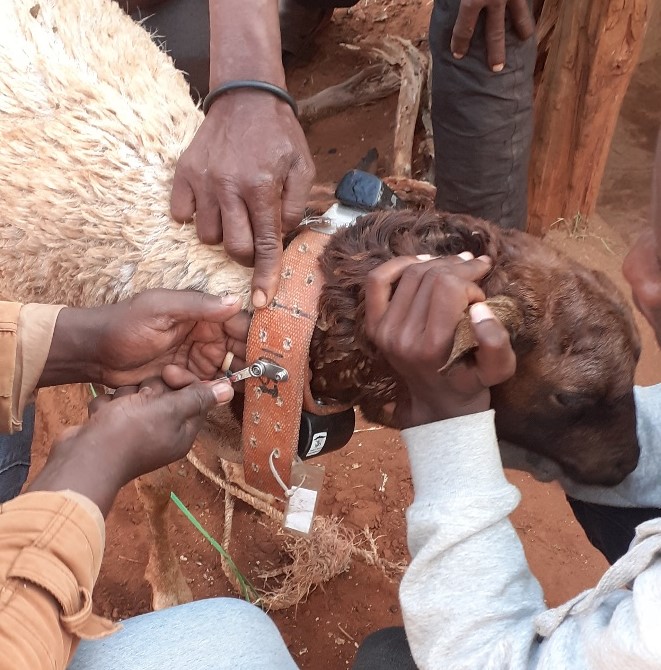
Tracking sheep movement was critical as animals need to consume feed to supply energy needed for movement. Each kg of feed leads to about 21 g of methane emissions per sheep (based on Mazingira Centre studies). The more they eat, the more methane they produce.
The researchers also analyzed samples of different feedstuff offered to the animals at ILRI’s Mazingira Centre’s laboratory. The Mazingira lab is a regional hub for East Africa that can analyse feed, manure, soil and gas samples.
They could then use these data to estimate feed digestibility, which is another major driver for feed intake. The more digestible a feed is, the less an animal needs to eat and so less methane is produced.
Findings
The emission calculation, led by Endale Gurmu, a consultant at ILRI’s Mazingira Centre and an associate professor at Mekelle University in Ethiopia, found that the IPCC Tier 2 method yields significantly higher flock-level emission factor than both IPCC Tier 1 and CSIRO Tier 2 (Figure 2). The IPCC Tier 2 model yielded approximately 12.4% higher EF than the CSIRO Tier 2 model.
At 6.0 kg of methane per animal per year, IPCC Tier 2 produces the highest emission factor value. CSIRO Tier 2 yielded an emission factor value of 5.3 kg per sheep and IPCC Tier 1 came in third with an emission factor value of 5.0 kg methane per animal per year.
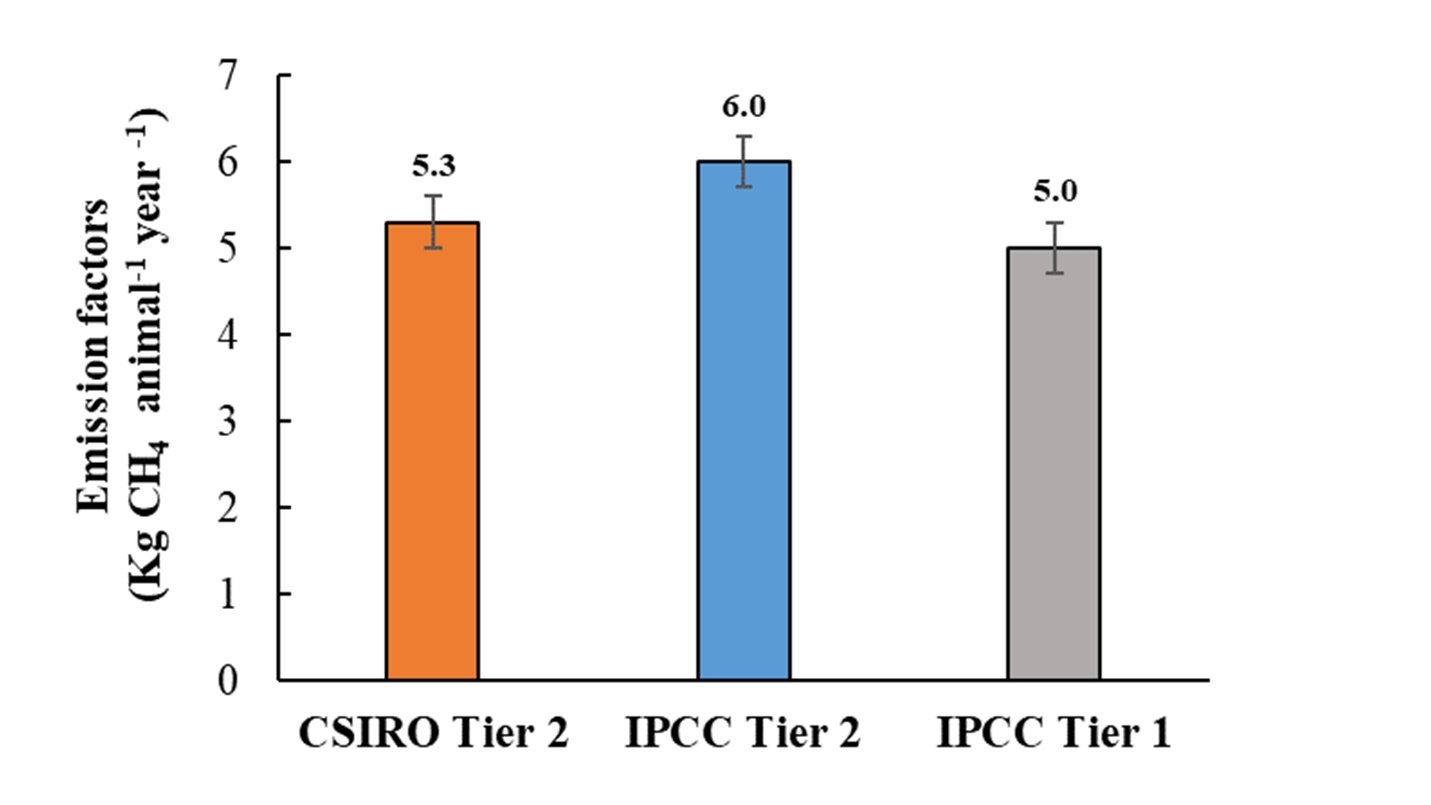
Why is there a difference between the two Tier 2 approaches?
The CSIRO Tier 2 approach accounts for the age of the sheep and distance traveled when estimating energy requirements for maintenance.
IPCC Tier 2 treats travel as a fixed figure and adds energy expenditure for pregnancy to the calculation. As a result, IPCC Tier 2 consistently yields significantly higher emission factors values for all sheep classes because there are more mature ewes in the study population, which are more likely to get pregnant.
Recommendations
To choose the best model and create accurate national GHG inventories, researchers must investigate how both Tier 2 models measure up to actual intake and emission measurements.
As for the IPCC Tier 1 model, it needs to be regionalized by using values that are more representative of the local systems or by creating regional default values, rather than relying on a single value for the entire continent.
Acknowledgement
This work was supported by Programme for Climate-Smart Livestock Systems (PCSL) financed by the GIZ-commissioned German Federal Ministry for Economic Cooperation and Development (BMZ) (grant: 2017.0119.2); CGIAR research initiatives Mitigate+: Research for Low Emissions Food Systems and Livestock and Climate supported by contributors to the CGIAR Trust Fund; the New Zealand Government to support the objectives of the Global Research Alliance on Agricultural Greenhouse Gases; and LM supported by the European Union’s Horizon Europe Programme (grant agreement number 101058525) for the project "Knowledge and climate services from an African observation and Data research Infrastructure (KADI).
You may also like

ILRI News
Scaling market-oriented sheep fattening for rehabilitation and resilience: Empowering internally displaced people in Ethiopia

Working towards sustainable livestock systems - a focus on three CGIAR initiatives at the FAO Science and Innovation Forum

Pacem Kotchofa’s PPR research wins second place at World Food Forum’s Transformative Research Challenge
Related Publications

History and genetic diversity of African sheep: Contrasting phenotypic and genomic diversity
- Da Silva, A.
- Ahbara, A.
- Baazaoui, I.
- Jemaa, S.B.
- Cao, Y.
- Ciani, E.
- Dzomba, E.F.
- Evans, L.
- Gootwine, E.
- Hanotte, Olivier H.
- Harris, L.
- Li, M.-H.
- Mastrangelo, S.
- Missohou, A.
- Molotsi, A.
- Muchadeyi, F.C.
- Mwacharo, J.M.
- Tallet, G.
- Vernus, P.
- Hall, S.J.G.
- Lenstra, J.A.

Economic assessment of animal disease burden in Senegalese small ruminants
- Meyer, Anne
- Ndiaye, Bakary
- Larkins, Andrew
- Chaters, G.
- Gilbert, W.
- Huntington, Benjamin
- Ilboudo, Guy S.
- Dione, Michel M.
- Jemberu, Wudu T.
- Diouf, M.N.
- Fall, A.G.
- Fall, M.
- Lo, M.
- Rushton, Jonathan

Evaluating reproduction traits in a crossbreeding program between indigenous and exotic sheep in semi-arid lands
- Oyieng, Edwin P.
- Ojango, Julie M.K.
- Gauly, M.
- Mrode, Raphael A.
- Dooso, Richard
- Okeyo Mwai, Ally
- Kalinda, C.
- König, S.

Assessment of vaccination impact in PPR-control program implemented in southern States of India: A system dynamics model approach
- Gurrappanaidu, G.
- Subbanna, N.K.G.
- Wanyoike, Francis N.
- Bahta, Sirak T.
- Reddy, Y.R.
- Bardhan, D.
- Vinayagamurthy, B.
- Kennady, Vijayalakshmy
- Rahman, Habibur






